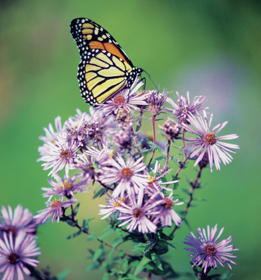Lesson 4: Graphing Logarithmic Functions
Focus

Photodisc/Thinkstock
The population of butterflies is dependent on the number of flower species the butterflies feed on. The relationship is a logarithmic function. As the number of flowers species, F, increases, so does the number of butterfly observations, B, but at a slow rate.
In the previous lesson you explored the meaning of logarithms and how they are evaluated. In this lesson you will explore graphing logarithmic functions and how transformations can be used to help sketch logarithmic functions. You will also look at how logarithmic functions can be used to solve problems.
Lesson Outcomes
At the end of this lesson you will be able to
- sketch the graph and identify the characteristics of a logarithmic function of the form y = logc x, c > 0 and c ≠ 1
- sketch the graph of a logarithmic function by applying transformations to the graph of y = logc x, c > 0 and c ≠ 1
Lesson Question
You will investigate the following question:
- How can logarithmic functions be graphed and described using transformations?
Assessment
Your assessment may be based on a combination of the following tasks:
- completion of the Lesson 4 Assignment (Download the Lesson 4 Assignment and save it in your course folder now.)
- course folder submissions from Try This and Share activities
- additions to Formula Sheet